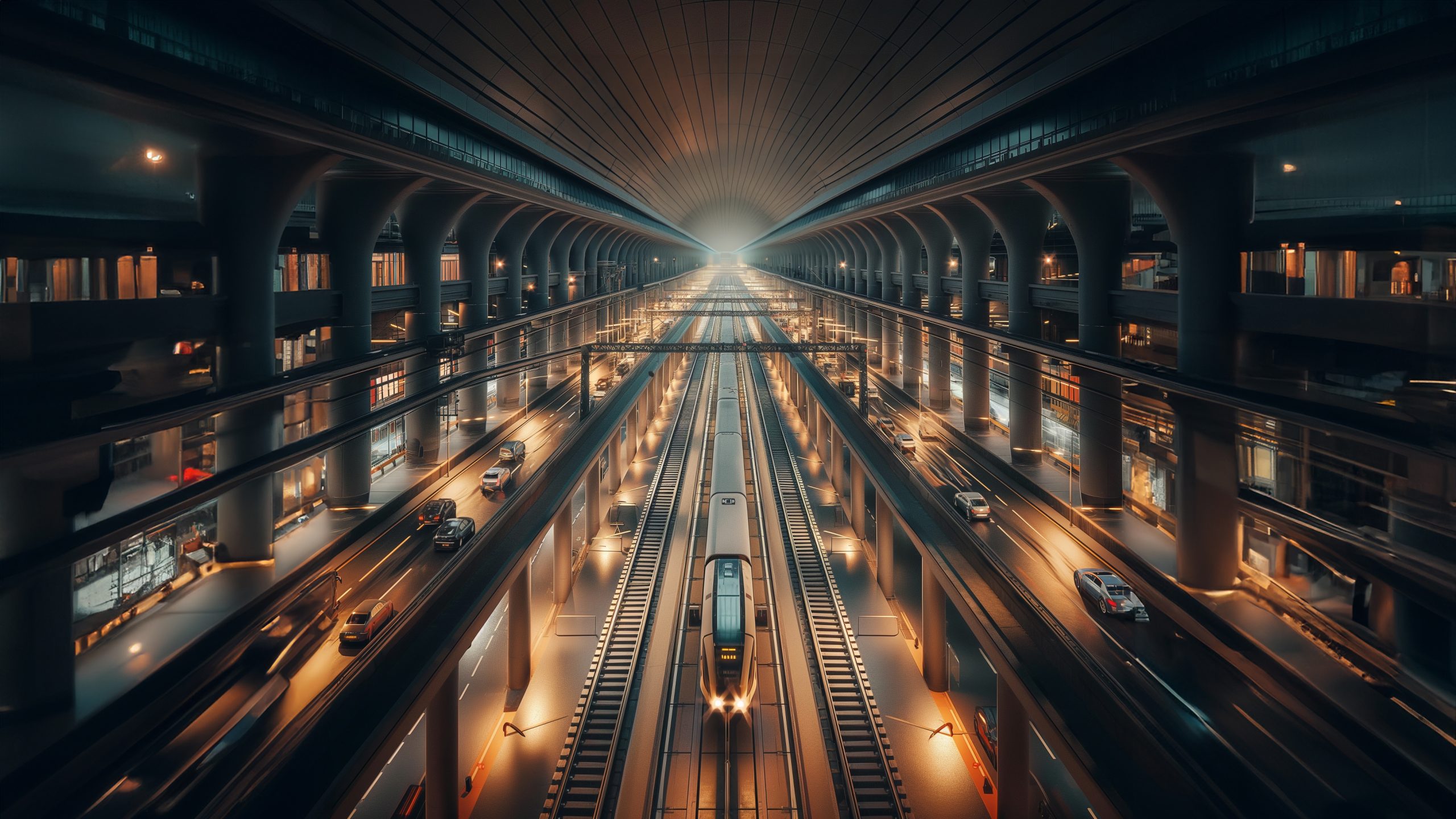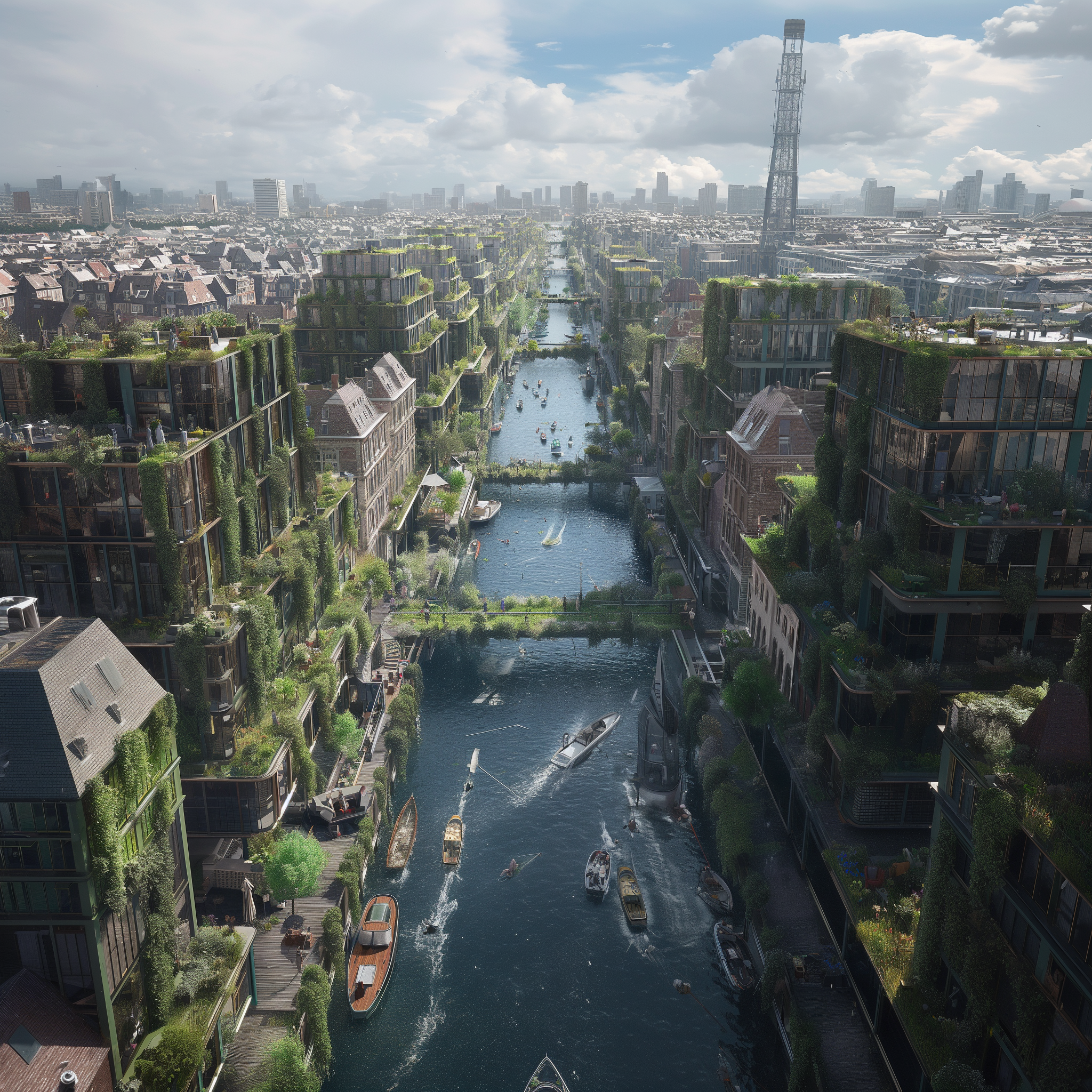Move through the city like a leaf borne on the wind.
In the atmospheric city of Ghent, steeped in history and cultural splendor, personal mobility forms an essential aspect of daily life. Amidst the medieval architecture and vibrant energy of this Belgian city, the way residents get around is evolving. Ghent, with its narrow streets and historic charm, has embraced the challenge of embracing modern mobility solutions while staying true to its heritage. This intriguing interplay between tradition and progress not only reflects the unique characteristics of the city but also the ongoing efforts to create a sustainable and efficient mobility landscape. Let's explore together how personal mobility in Ghent tells a story deeply rooted in both the past and the future.
GHENT Today
Over the centuries, mobility in Ghent has undergone various transformations. In the 19th century, pedestrians dominated the streetscape, followed by the emergence of horse-drawn carriages and wagons, which made the city more accessible. The introduction of trams at the end of the 19th century brought significant improvements to urban transport.
The rise of the automobile in the 20th century brought about a drastic change in personal mobility. Streets were adapted for motorized traffic, bringing both benefits and challenges such as traffic congestion and environmental issues. The idea of underground transportation was considered in the 1960s but was rejected due to high costs, while trolleybuses, though introduced, were ultimately replaced by hybrid buses.
Ghent is now known for its bike-friendly infrastructure with a significant increase in cycling in recent decades. This is supported by initiatives such as extensive bicycle parking and city bikes that can be rented by the hour. The mobility culture in Ghent has shifted towards more sustainable modes of transport, with a significant increase in sustainable travel by foot, bicycle, and public transport since 2012. This trend towards more sustainable mobility appears to be continuing, with a growing number of Ghent households living without a car.
While cars are convenient means of transportation, they have their drawbacks. They often take up too much space, especially in cities, and finding parking can be challenging. Additionally, gasoline and diesel cars are environmentally harmful due to their reliance on fossil fuels. Hydrogen cars are more environmentally friendly, but they have limited availability of refueling stations.

Source: (2017, November 9). YouTube: Home. Retrieved February 15, 2024, from https://stad.gent/sites/default/files/media/documents/Gent%20Mobiliteitsonderzoek%20-%20Eindrapport%202021_0.pdf
Hybrid and electric cars provide cleaner alternatives but still have limitations such as a lack of charging points and battery capacity. Self-driving cars promise a revolution, but there are still technological and legal obstacles to overcome.
Car-sharing and electric scooters are becoming increasingly popular, though they have challenges such as safety and parking issues. Bicycles are environmentally friendly and healthy, but safety concerns and storage problems persist.
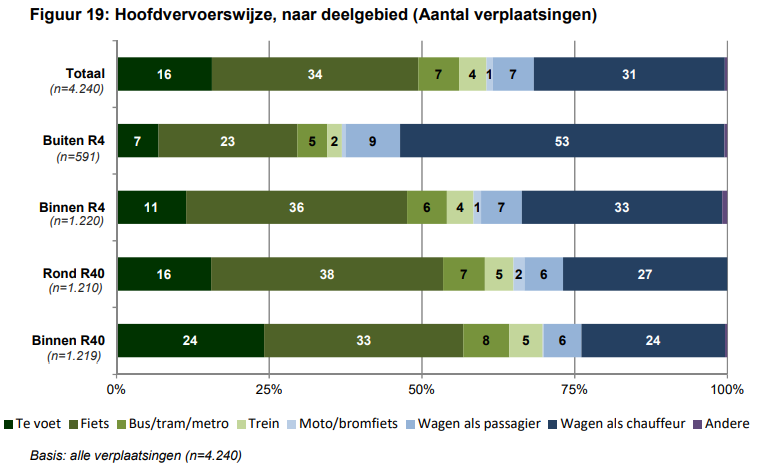
Source: (2017, November 9). YouTube: Home. Retrieved February 15, 2024, from https://stad.gent/sites/default/files/media/documents/Gent%20Mobiliteitsonderzoek%20-%20Eindrapport%202021_0.pdf
Ghent strives for sustainable mobility with a growing use of bicycles and a decrease in non-sustainable trips. However, there are still challenges such as accessibility to public transport. The city is working on improvements to achieve its goals for a liveable city. In the final report of the Ghent mobility study (2021), we can conclude that more and more people go on foot the closer you approach the city center (see graphs).
People express various ideas about mobility, from underground transportation to futuristic concepts like teleportation. These discussions reflect the quest for innovative solutions for seamless, sustainable mobility in the future. With these insights, we have explored a possible future scenario for Ghent in 2084.
GHENT 2084
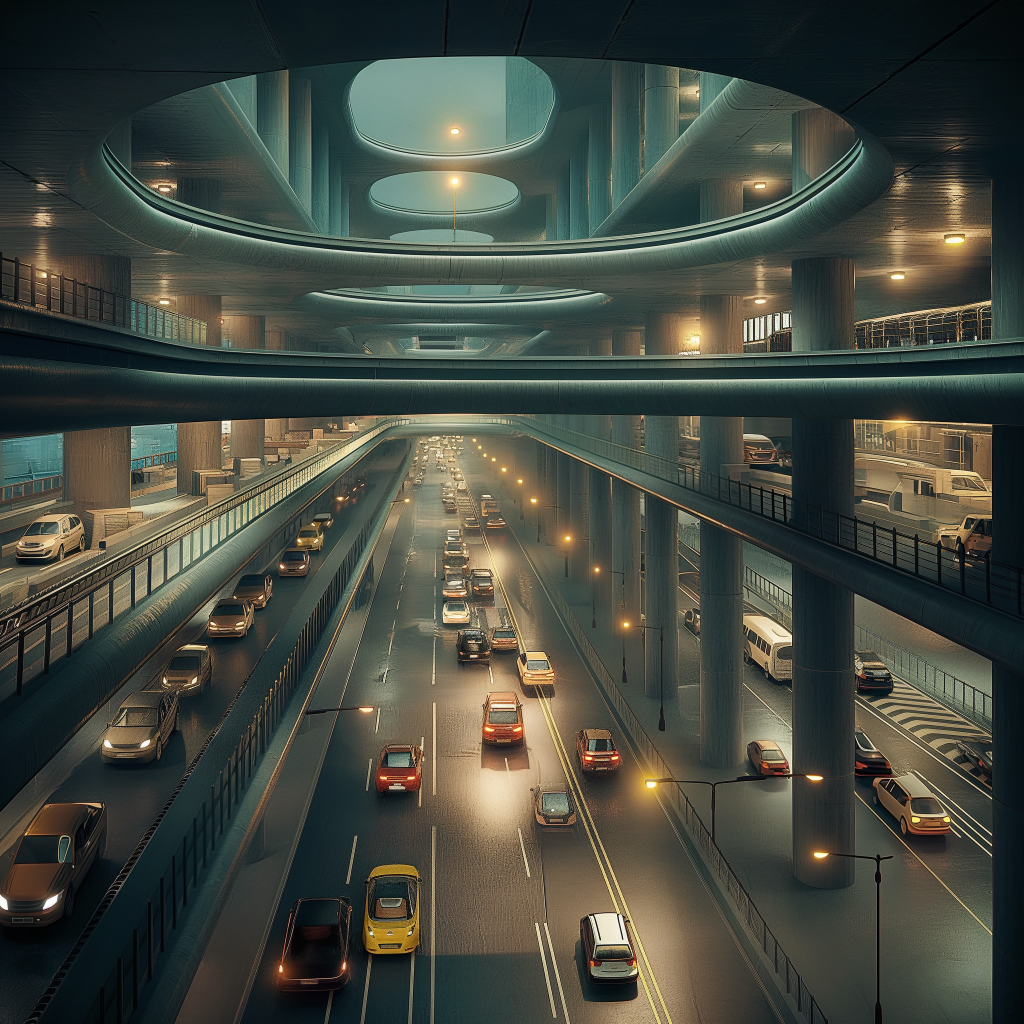
Welcome to Ghent 2084: a progressive city where sustainability and innovation come together to create a living environment that is both people and environmentally friendly. Underneath the bustling streets of Ghent lies an ingenious network of transport. Above ground, Ghent is characterized by green spaces, parks and cultural facilities, while buildings are carefully designed with respect for the surrounding nature. Art and culture flourish in the city, with public art installations and vibrant markets adding to the vibrant city life.
We are launching a multi-layer underground network for more efficient and greener transportation. The top layer is for self-driving cars and electric cars with human drivers, a cleaner and quieter alternative to the existing above-ground roads. Deeper are hyperloop stations for fast long-distance travel, which run like arteries through the city, seamlessly connecting residents to other European cities, eliminating the need for short flights. It not only provides a fast way to travel, but also significantly reduces the environmental impact of travel.
Above ground, Ghent 2084 is characterized by a harmonious interplay between humans and nature. Green spaces and parks stretch across the city, allowing residents and visitors to enjoy a refreshing break amidst urban hustle and bustle. Buildings are carefully designed with sustainability and aesthetics in mind, blending architecture and natural elements seamlessly. This above-ground environment is a reflection of the pursuit of a balanced and healthy living environment, where human needs are in harmony with the natural surroundings.
In Ghent 2084, innovative water-based solutions have developed in response to the challenges of rising sea levels. Underground canals and waterways crisscross the city, creating not only a practical transport network but also a picturesque environment for recreation and relaxation. Electric boats and water bikes provide personal transportation along these waterways while simultaneously contributing to reducing the ecological impact of traditional transport methods. This underground water world reflects Ghent's ability to adapt and thrive amidst changing circumstances while offering its residents a unique and sustainable lifestyle.
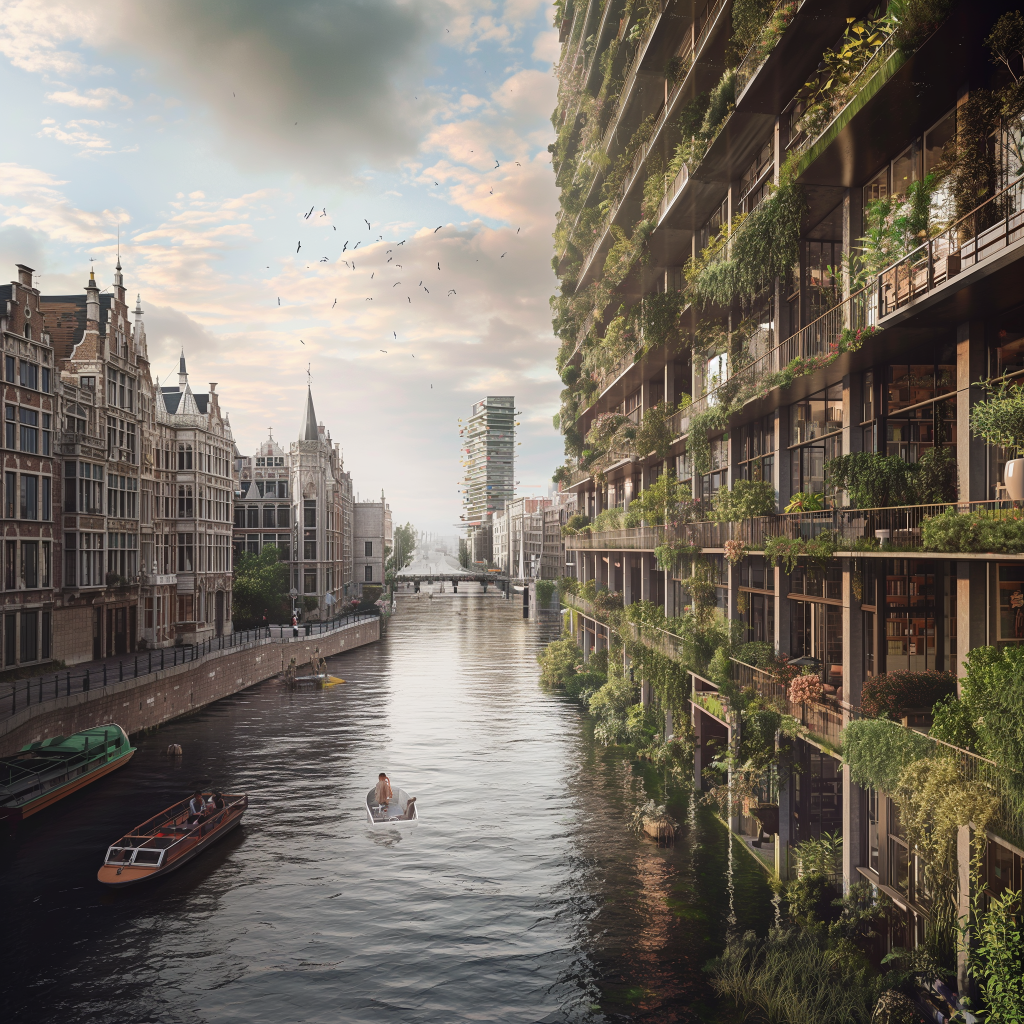
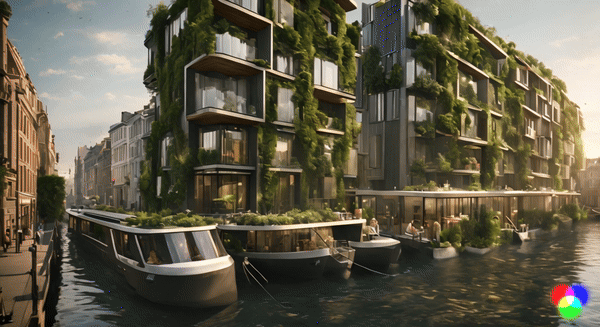
In Ghent 2084, the city is an example of sustainable urban development, where advanced technologies and green initiatives come together to promote prosperity, health, and harmony. This visionary city serves as inspiration for cities worldwide striving for a more sustainable and inclusive future. Welcome to the future of Ghent.


